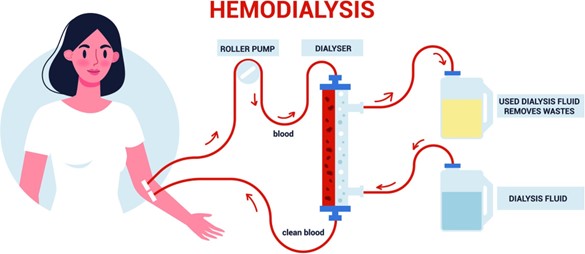Exhibits
Drag from word choices to complete the sentence.
Based on the laboratory data, the client has related to
The Correct Answer is {"dropdown-group-1":"A","dropdown-group-2":"B"}
Based on the laboratory data, the client has:
Option 1: Pre-diabetes
Option 2: Impaired glucose tolerance
The client's fasting blood glucose level of 122 mg/dL (6.8 mmol/L) falls within the range of 100 to 125 mg/dL (5.56 to 6.9 mmol/L), indicating impaired glucose tolerance. This suggests that the client's blood sugar levels are higher than normal but not high enough to be classified as diabetes mellitus.
Impaired glucose tolerance is considered a precursor to diabetes and indicates an increased risk of developing diabetes in the future. It is important for the practical nurse to educate the client about lifestyle modifications to manage blood sugar levels and prevent the progression to diabetes.
Nursing Test Bank
Naxlex Comprehensive Predictor Exams
Related Questions
Correct Answer is B
Explanation
Bathing a bedfast client with the bed in a high position poses a potential risk to the client's safety. Lowering the bed to a safe height is important to prevent falls and injuries during the bathing procedure. The PN should promptly intervene and instruct the UAP to lower the bed to an appropriate level before continuing with the bathing process.
A. While remaining in the room to supervise the UAP is important, it should be done after ensuring the client's safety by lowering the bed. If the bed is not lowered, the risk of injury remains, and the PN should take immediate action to address the safety concern.
C. Determining if the UAP would like assistance is a valid consideration, but it should be secondary to addressing the safety issue of the bed height. Once the bed is lowered, the PN can assess if additional assistance is required and provide support accordingly.
D. Assuming care of the client immediately may be necessary if the client is in immediate danger or experiencing an urgent medical situation. However, in this case, the primary concern is addressing the safety issue related to the bed height, and the PN can address this by instructing the UAP to lower the bed.
Correct Answer is D
Explanation
Hemodialysis is a procedure used to remove waste products and excess fluid from the blood when the kidneys are unable to function properly. One of the waste products that accumulate in the blood during kidney dysfunction is creatinine. Creatinine is a byproduct of muscle metabolism, and its levels in the blood are normally regulated and eliminated by the kidneys. In AKI, the kidneys are not able to effectively filter and eliminate creatinine, leading to elevated levels in the blood. Hemodialysis helps to remove excess creatinine from the blood, resulting in decreased creatinine levels.

A- Elevated potassium levels (hyperkalemia) are common in AKI and can be life-threatening. Hemodialysis helps to remove excess potassium from the blood, restoring normal levels.
However, the best indicator of the effectiveness of hemodialysis in managing hyperkalemia would be monitoring the potassium levels before and after the session rather than considering it as the "best" indicator.
B- Decreased calcium levels can occur in kidney dysfunction due to impaired activation of vitamin D and decreased absorption of calcium from the intestines. While hemodialysis can help restore calcium levels, it may not be the primary laboratory value used to evaluate the effectiveness of each session.
C- Lowered hemoglobin levels can be seen in AKI due to various factors, including decreased production of red blood cells and blood loss. Hemodialysis can help remove waste products and excess fluid, but it may not directly address the underlying causes of lowered hemoglobin levels.
Whether you are a student looking to ace your exams or a practicing nurse seeking to enhance your expertise , our nursing education contents will empower you with the confidence and competence to make a difference in the lives of patients and become a respected leader in the healthcare field.
Visit Naxlex, invest in your future and unlock endless possibilities with our unparalleled nursing education contents today
Report Wrong Answer on the Current Question
Do you disagree with the answer? If yes, what is your expected answer? Explain.
Kindly be descriptive with the issue you are facing.
